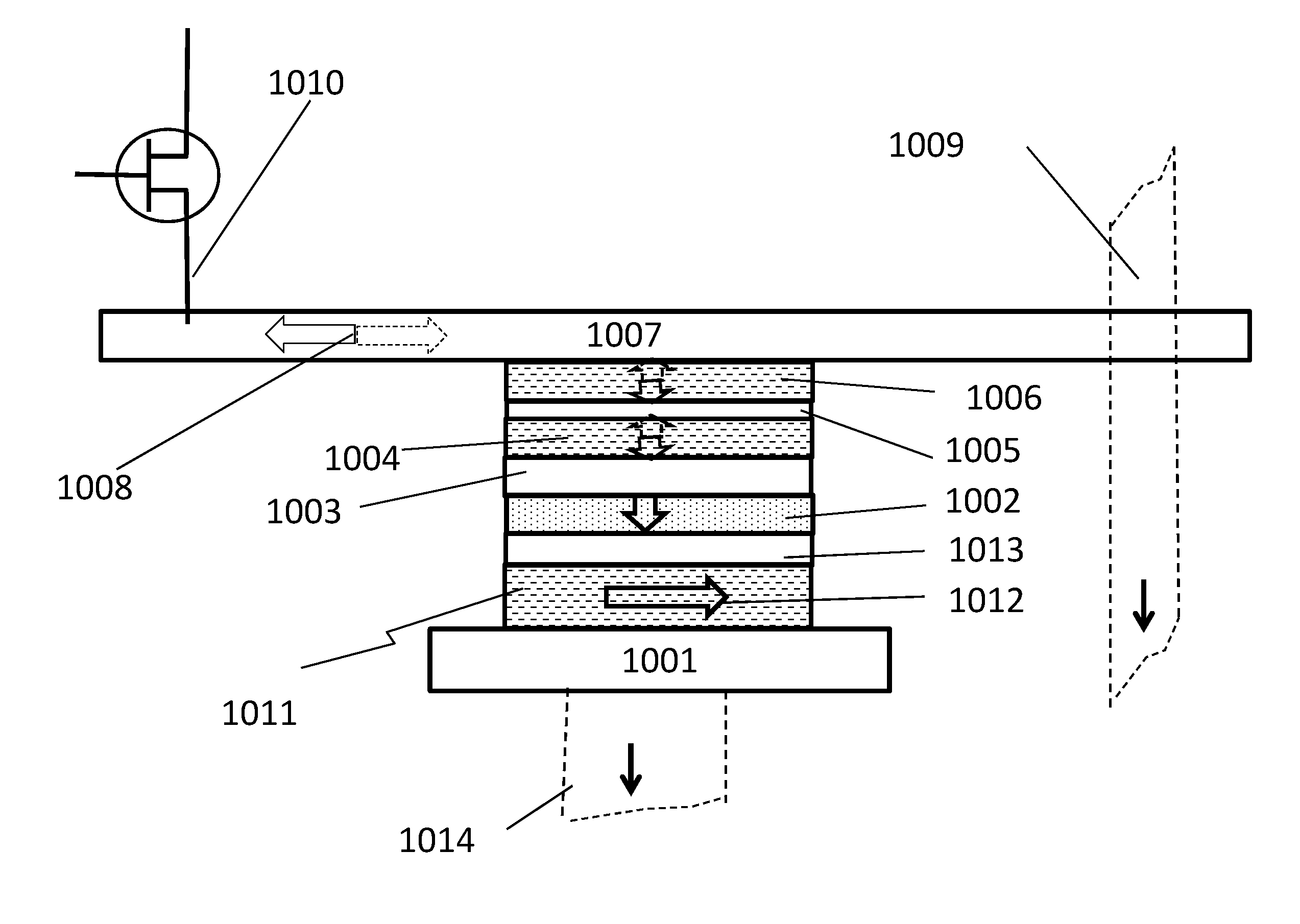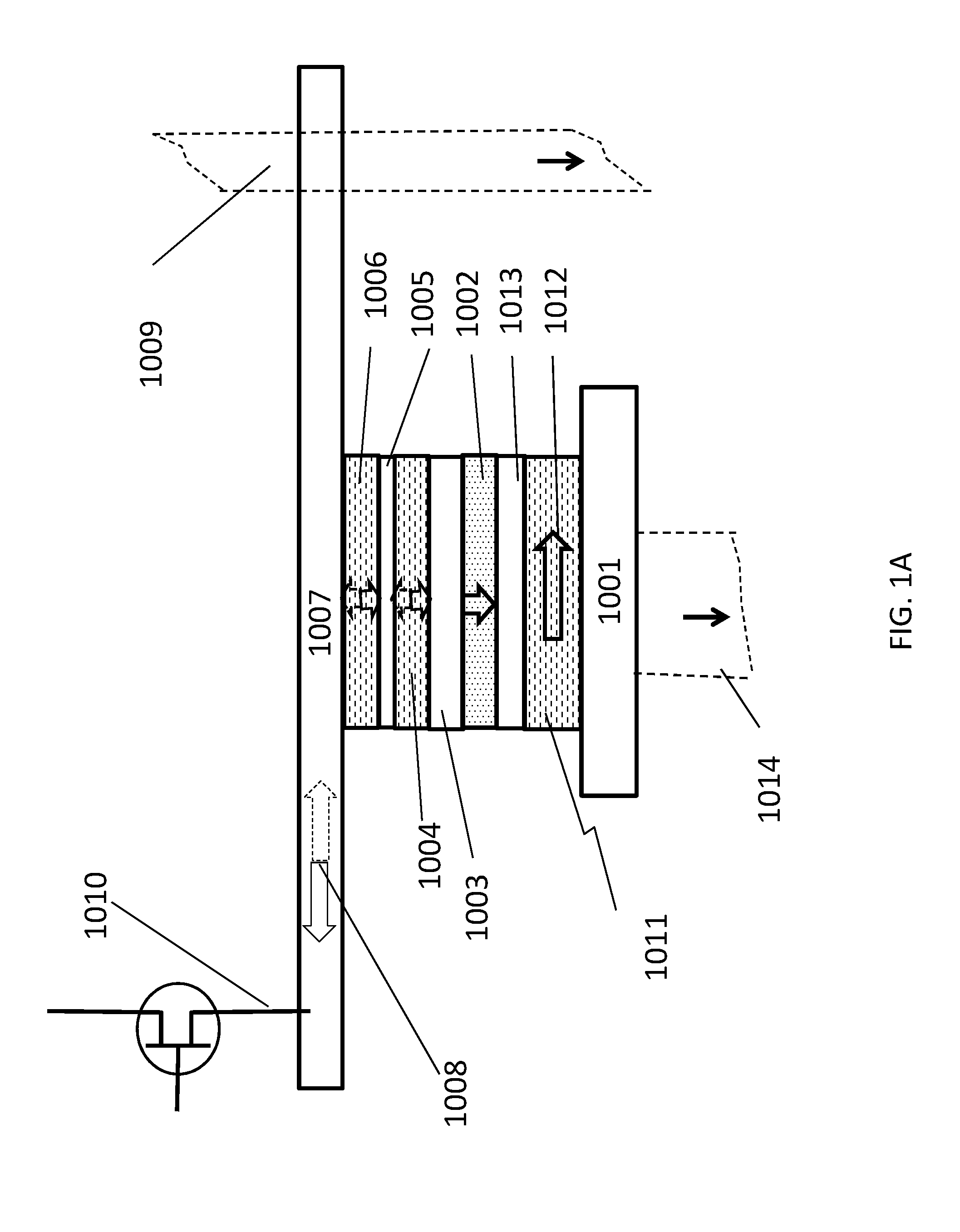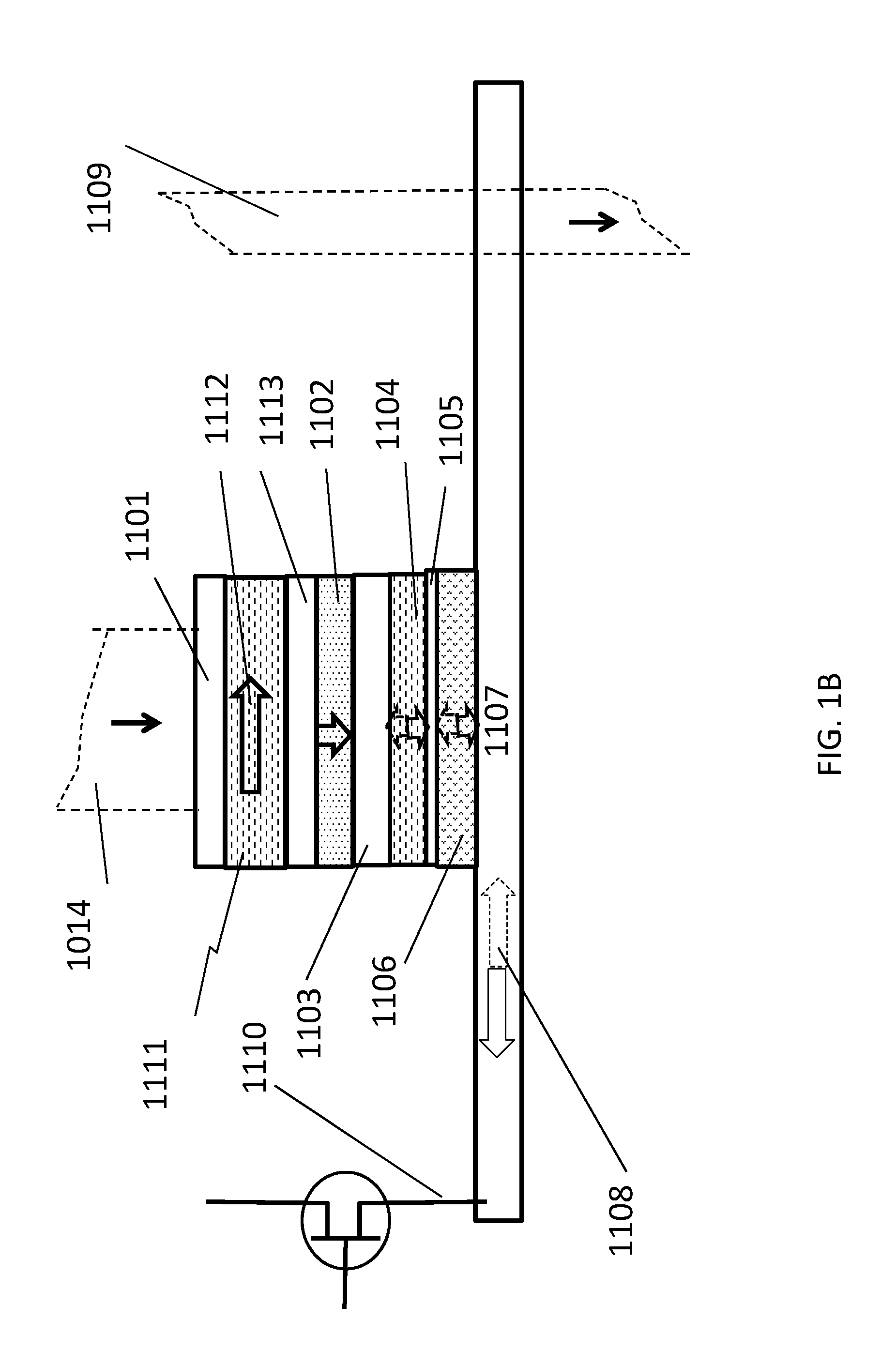Magnetoresistive Random Access Memory Cell
a random access and memory cell technology, applied in the direction of magnetic field-controlled resistors, digital storage, instruments, etc., can solve the problems of slow write, flash memory has limited endurance of writing cycle, and information loss
- Summary
- Abstract
- Description
- Claims
- Application Information
AI Technical Summary
Benefits of technology
Problems solved by technology
Method used
Image
Examples
Embodiment Construction
[0028]The following description is provided in the context of particular designs, applications and the details, to enable any person skilled in the art to make and use the invention. However, for those skilled in the art, it is apparent that various modifications to the embodiments shown can be practiced with the generic principles defined here, and without departing the spirit and scope of this invention. Thus, the present invention is not intended to be limited to the embodiments shown, but is to be accorded the widest scope consistent with the principles, features and teachings disclosed here.
[0029]FIG. 1A illustrates one embodiment of the proposed SOT-MRAM cells based on perpendicular TMR stack locating at the bottom of the cell structure, together with an in-stack magnet providing a magnetic field bias to storage layer along the switching current direction. The in-stack bias magnet is just an optional, which helps to low the switching / write current of the cell. In the following...
PUM
 Login to View More
Login to View More Abstract
Description
Claims
Application Information
 Login to View More
Login to View More - R&D
- Intellectual Property
- Life Sciences
- Materials
- Tech Scout
- Unparalleled Data Quality
- Higher Quality Content
- 60% Fewer Hallucinations
Browse by: Latest US Patents, China's latest patents, Technical Efficacy Thesaurus, Application Domain, Technology Topic, Popular Technical Reports.
© 2025 PatSnap. All rights reserved.Legal|Privacy policy|Modern Slavery Act Transparency Statement|Sitemap|About US| Contact US: help@patsnap.com



